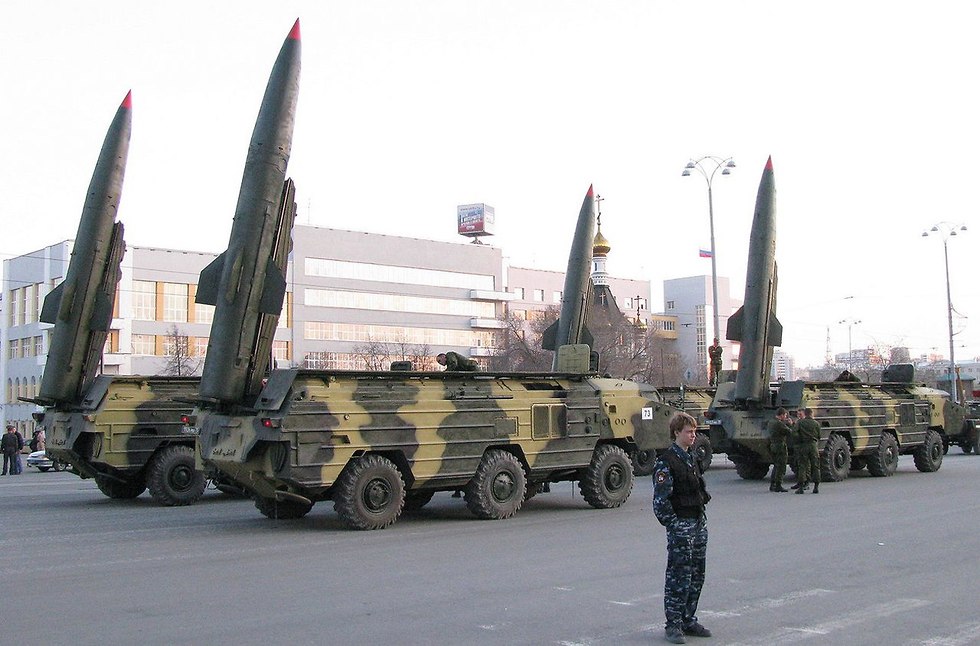
David's Sling misses Syrian SS-21 missiles in first interception
Inquiry team examining Monday morning's incident, in which two David's Sling interceptors were fired for the first time at enemy projectiles, believe the interception failed due to technological reason; will be able to pinpoint cause in next 2-3 days.
Inquiry teams made up of representatives from the manufacturer Rafael Advanced Defense Systems, the Defense Ministry's Missile Defense Organization (MDO) and the Israel Air Force have launched an investigation into the incident Monday morning over the Golan Heights.
David's Sling, which is part of Israel’s multi-layered missile defense program, operates in the layer above the Iron Dome and below the Arrow systems.
Meaning, it is designed to intercept tactical ballistic missiles and medium- to long-range rockets and cruise missiles fired from distances of 40-300km.
Monday morning's incident was the first time David's Sling was used against enemy projectiles since it was declared operational in March 2017.
The defense establishment is expected to be able to point to the reason the interception failed within the next two or three days. The cause of the failure is likely technological in nature, and not related to the Air Force operators of the system, who made a reasonable decision to launch the two interceptor missiles from the David's Sling permanent site in the north.
Unlike the Iron Dome system, David's Sling is not mobile. But much like the Arrow systems, David's Sling provides coverage from its stationary location to the entire country.
It is possible that the decision to destroy one of the interceptor missiles in midair near the Kinneret will found to be the wrong decision, as in hindsight the interceptor could have continued its flight until possibly hitting the large target coming from the southeast.
David's Sling is meant to be able to take on the two Soviet-made surface-to-surface SS-21 missiles, which were fired Monday morning by the Syrian army against the rebels. The missiles, which are called SS-21 by NATO, are called "Tochka" in Russian, meaning "dot"—an indication of their precision.
The SS-21 missiles were developing in the 1970s by the Soviet Union and sold to the Syrian army. The missile's range is 14-70 kilometers. It weighs 2.5 ton, 480 kilograms of which make up the warhead, which scatters a lot of spray as it hits its target. Its diameter is 65 centimeters. The SS-21 is fired from a single launcher, such as a truck, and is directed in air by wingtip devices.
The Israeli detection systems are meant to identify and catalog it—based on all of its familiar attributes—relatively fast, within seconds, and act accordingly.
The initial investigation found that the predicted impact point of the two Syrian missiles, which were in the air for 1-1.5 minutes, was deep in Israel's northern region. Therefore, the decision to launch the interceptor missiles was justified, though it might not have been economically justified, since the cost of each missile is $1 million.
But the fact that the chief contractor of the system, Rafael, is based in Israel, as opposed to the US's army's Patriot, will help understand what went wrong quicker, and if necessary, draw the necessary conclusions for the next incident.
At the same time, the David Sling system has proven to be an advantageous system of great importance: it knows how to provide a broad response and defense coverage.


















